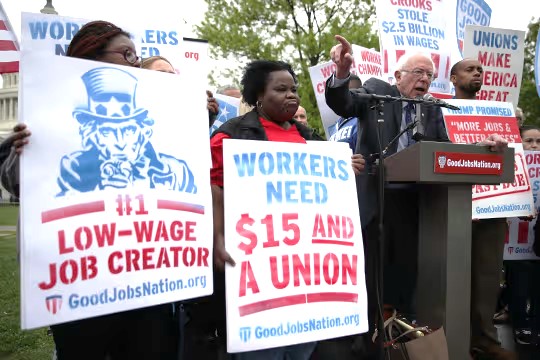The key to ending poverty, bridging economic disparities, and revitalizing our economy might lie in a single, bold idea: guaranteeing a job to every American willing to work.
The idea of a federal jobs guarantee isn’t new. The concept first gained traction during the Great Depression, when President Franklin D. Roosevelt responded to severe unemployment with programs such as the Civilian Conservation Corps and Works Progress Administration, providing millions of Americans with jobs. During World War II, the US came the closest it has ever come to full employment, with an average unemployment rate under 1.7%. After the war, the proposed Full Employment Act of 1946 included an obligation for the government to guarantee a job for anyone willing and able to work. Due to opposition, the legislation that passed fell short of guaranteeing jobs.
Policymakers typically associate “full employment” with an unemployment rate of 4-6%. This number does not include those who have stopped seeking employment or are unemployed. Even with the current unemployment rate of 4.1%, 6.9 million workers do not have a job and are looking for one.
A federal jobs guarantee such as the proposed National Investment Employment Corps (NIEC) would provide a government-funded, living-wage job to anyone who wants one, eliminating involuntary unemployment and working poverty. By setting a standard for fair compensation and job security, this initiative could empower private-sector employees to advocate for higher wages and better working conditions. A jobs guarantee integrates the liberal goal of reducing poverty with the conservative value of self-reliance, enabling individuals to lift themselves out of poverty through meaningful work. These jobs could address public needs, like infrastructure modernization and environmental conservation while acting as an economic stabilizer—boosting demand during downturns and preventing inflation from excess government spending during booms. According to the Center on Budget and Policy Priorities, the NIEC would initially cost $543 billion per year, but this would be partially offset through reduced welfare spending, a larger tax base, and as workers transition back into private sector jobs.
Policymakers have long insisted that welfare benefits must be earned through work, ensuring they are not seen as handouts. How can we demand that Americans live up to our expectations while denying them the opportunity to do so?
For more information:
The Federal Job Guarantee – A Policy to Achieve Permanent Full Employment
Say Goodbye to Lousy, Low-Paying Jobs: The Benefits of a Jobs Guarantee









